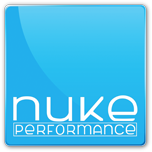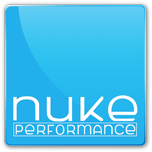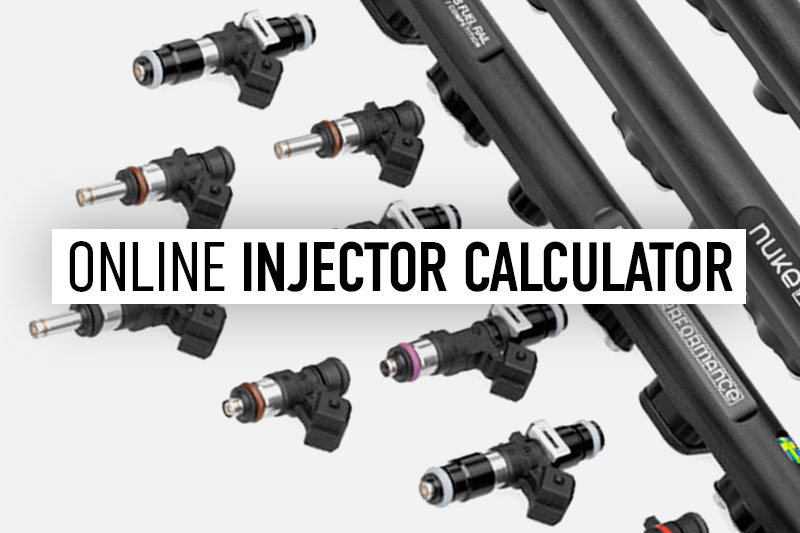FAQ : Frequently Asked Questions
Discover answers to your fuel system setup queries and learn about fuel pressure regulator operations on our FAQ page. Browse our concise list of frequently asked questions to simplify your understanding of fuel systems.
How does a Fuel Surge Tank work?
One of the most frequently asked questions is how a fuel surge tank work and how to utilize it within a fuel system. This also includes how you should set up your fuel system, and there is a lot to learn about...
What is the purpose of a fuel surge tank?
What is a fuel cell surge tank unit?
How to set up a fuel system utilizing a surge tank?
We´ve compiled all the answers and info you need to understand the setup of a stable fuel system for maximum performance, click the link below to visit our FAQ - How does a Fuel Surge Tank work?
How does a Fuel Pressure Regulator work?
One of the main features in your fuel system is the FPR, the fuel pressure regulator. The role it plays in your aftermarket fuel system, how it works, and how to choose between the different versions, let's go through some of its features...
What is the purpose of a fuel pressure regulator?
How does a fuel pressure regulator work?
Nuke Performance offers a wide range of fuel pressure regulators suitable for your aftermarket fuel system with needs between 200 all the way up to 2000+ horsepower. Learn more by clicking the link below to visit our FAQ - How does a Fuel Pressure Regulator work?
How to assemble a PTFE Fuel Line?
First time assembling a PTFE fuel line things can be a pain in the ass, but with a little bit of training and just following a few simple steps, the process of DIY assembly of your PTFE fuel hose and hose ends will be done in no time.
Why should I use PTFE instead of nitrile fuel hoses?
Do PTFE fuel lines have longer life span than other?
What do I need to assemble the fuel lines?
In our FAQ you find all the info you need to assemble your Full Flow PTFE fuel lines from Nuke Performance, both as video and 8-step step-by-step instructions. Learn more by clicking the link below to visit our FAQ - How to assemble a PTFE hose end?
How does a Fuel Cell Surge Tank work?
Utilizing a Fuel Cell Surge Tank unit such as the Nuke Performance CFC Unit is a great way to combine everything into one unit when running an aftermarket fuel cell. We have several different options to choose from, but how does it work, and how to set it up?
Why should I choose to go with a CFC Unit?
Do I need an external surge tank also?
Does it fit my fuel cell and how do I mount it?
The CFC Unit is the best way to set up your aftermarket fuel system when using an aftermarket fuel cell, and learn more by clicking the link below to visit our FAQ - How does a Fuel Cell Surge Tank work?
How does an Blow Off Valve work?
There are many different types and models of blow off valves, but all serve the same purpose. Here, we review the basics, explain how a blow off valve works, and go through the different parts and what they do and functions.
What is the purpose of a blow off valve?
How does an atmospheric blow off valve work?
The Nuke Performance 50mm Blow Off Valve is ready for a serious boost and with its changeable setup spring, it is easy to set up for your performance need. Learn more about how to set it up and learn more about its functionality by clicking the link below to visit our FAQ - How does a blow off valve work?
How to use the Air Jack Elephant Feet?
Want to get a higher working height when using the Nuke Performance Air Jacks? With the Elephant Feet, you get an extended, second-stage, lift of the vehicle, perfect for workshop maintenance.
How does the Air Jack 90C Elephant Feet work?
How to use the Air Jack 90C Elephant Feet?
We have made a short video on how to use the Elephant Feet with the Nuke Performance 90C Air Jacks, check it out on our official Youtube channel. Learn more about how they work and about their functionality by clicking the link below!
How do I calculate which Fuel Injectors are required for my fuel system?
Use our online injector calculator to determine the ideal injector capacity for your high-performance engine.
How do I calculate the required injector capacity?
How do I calculate injector flow, duty cycle, BSFC?
With our online injector calculator, you will learn the capacity that is needed, if there is a real need for flow-matching injectors and much more. We resell Bosch injectors that are a perfect match to our full-flow fuel rails and help you find the required injector specification for your every need.
Frequently Asked Questions :
Can I buy your products from my country?
At present, we have retailers in nearly 20 countries and it is constantly increasing. We always recommend that you contact a local supplier in the first place, but if you can not find such, you can always place an order directly from us here on our official website. We ship worldwide and most often ship the package already on the day we receive your order. If you can´t find your country listed either on our list of dealers or in the webshop checkout, contact us for more information.
What products do you have for my car?
We offer a wide range of universal tuning products, these products more or less fit all vehicles that use gasoline and alcoholic fuels. The only products we have that are model-adapted are our fuel rails. If your model is represented on our fuel rails product page, this will suit your engine. We can also quickly and efficiently generate new fuel rails for almost all engine models, contact us for more information.
Can you sponsor me and my car?
Nuke Performance receives daily requests for sponsorship and support to varying builds. We reserve the right to choose the builds, teams, or drivers we are interested in. We sponsor only genuine builds of high ambition and where a common goal can be established. There are high demands from both sides, so only a few builds or drivers are sponsored each year. If one of our dealers chooses to sponsor a driver, team, or build, we can sometimes support this sponsorship when regarding our range of products, all such requests are made to our dealers directly. For more information, or do you think you have what it takes, contact us directly.
How does the 60-day satisfaction guarantee work?
We believe that every Nuke Performance customer should be satisfied with the product they ordered, this is why we offer a satisfaction guarantee. If you do not find our product living up to our promises, contact us within 60 days after you placed your order and we will take care of you by attending to our satisfaction guarantee conditions.
How should I design my aftermarket fuel system?
Designing an aftermarket fuel system is many times very different from the other, depending on the conditions, performance goals, local legal conditions, fuel, etc. In our FAQ- How does a fuel surge tank work? we go through the basics of how to build a fuel system.
Do you have this item in stock?
We are proud to announce that for most of the time we have our complete range in stock for immediate delivery. And since 2018 we also have the function of advertising inventory directly here in our webshop. For larger orders, it may be a good idea to contact us for warehouse control, and we reserve for misprints. Normally, web orders are sent the same day or the day after ordering.
Are your products safe to use with alcoholic fuels?
All our fuel products are manufactured with the requirement that they will be able to handle alcoholic fuels such as ethanol. All internal surfaces are anodized and we use o-rings that are resistant to alcohol. Be sure to follow our service instructions on products such as fuel filters that may have alternative instructions.
Which fuel pressure regulator should I choose?
The new FPR100-series fuel pressure regulators are available in AN-6, AN-8, and AN-10, and all are fully adapted to your motorsports needs. FPR100s are suitable for 200-700 horsepower, FPR100m for 500-1200 horsepower, and FPR100x for 700-2000+ horsepower. All three are safe for all types of fuel, including alcoholic fuels such as ethanol.
Can I mount the CFC Unit to my aftermarket fuel cell?
The Nuke Performance CFC Unit is made to fit the standardized 24-bolt pattern in 6x10". This size is common among most fuel cell manufacturers such as ATL, Fuel Safe, Pyrotect, Jaz, Premier Fuel Systems, Radium, and many others. The different versions of the CFC Unit require different minimum mounting depths, the low profile CFC Unit (150-05-201) requires 219mm, and the high profile versions require a minimum depth of 197mm. We offer an aluminum flange that makes it possible to bolt the CFC Unit to a custom-manufactured fuel cell that uses this standard pattern. You can either weld it to your aluminum cell or copy the pattern to your top sheet and bolt the CFC Unit to it putting the top sheet in between the flange and the CFC Unit. The CFC Unit arrives with a Viton gasket (safe for all types of fuels), which fits perfectly for custom fuel cell applications.
How do I know which fuel level sender I should choose?
The Nuke Performance CFC Unit let you mount a universal fuel level sender to your aftermarket fuel cell. We offer a high-quality level sender that is available in 0-90 Ohms (76-6 Ohms / 240-33 Ohms available on request) version and in many different length options. The most commonly used length is 8" (used for ATL 30, 45, 60, and 80-liter Saver cells) and 9" (used for Alucell 20, 40, and 60 liter, and Pyrotect 10, 12, 15, 18, 22 gallons cells) length. You can see available fitment here: view fitment guidé.
If you want to install the fuel level sender to a fuel cell that is not listed in the fitment list, you take the measure from the top of the flange, all the way down to the bottom of the lid, then subtract 10mm, select the level sender that is the closest in length to that measurement. You must choose one that does not exceed the final measurement with the 10mm subtracted.
How come my fuel level sender doesn´t fit the CFC Unit bolt pattern?
All the Nuke Performance CFC Unit is equipped with a fuel level sender unit mounting point with a symmetrical 5 bolt hole pattern. The CFC Unit is delivered with an adapter plate that converts the bolt pattern into an asymmetrically 5 bolt hole pattern. This lets you choose between a wide variety of level senders from all the commonly used manufacturers. The fuel level senders delivered by Nuke Performance all need the adapter plate, also other common level senders such as those from VDO need the adapter plate. If the adapter plate is nowhere to be found, you can order a spare one, visit the product page.












